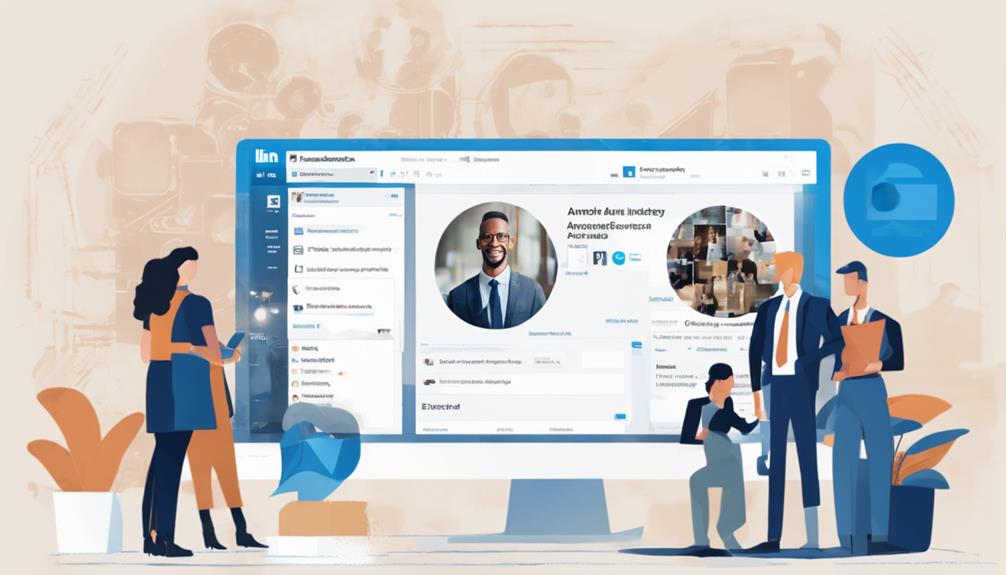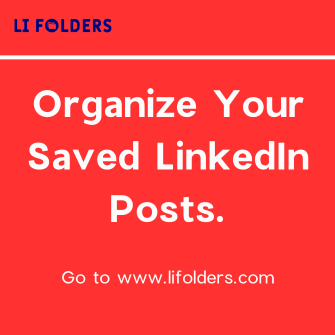
As you navigate the professional terrain of LinkedIn, it's crucial to refine and showcase your skills effectively. Start by optimizing your profile—think of it as your digital handshake. Are your headline and summary truly capturing your professional essence? Updating these elements can dramatically increase your visibility and attractiveness to potential employers or collaborators. But what about after these adjustments? There's a plethora of strategies to further elevate your profile and ensure you're not just another face in the crowd. Let's explore these, and you might discover some powerful tools and techniques that even seasoned LinkedIn users often overlook.
Optimize Your Profile

To effectively catch the eye of industry leaders and potential employers on LinkedIn, it's crucial to optimize your profile. First, you'll want to make sure your headline isn't just your job title. Use this space to showcase your specialties or key skills. Think of it as your professional tagline that grabs attention.
Next, focus on your summary. This isn't just a job history; it's your chance to tell your story. Why are you passionate about what you do? What unique skills do you bring to the table? Keep it engaging and inject your personality. Remember, this is often the first thing people read, so make it count.
Your experience section should go beyond listing your past jobs. Highlight your achievements and how you've added value in your roles. Use specific metrics if possible, like "increased sales by 20%" or "reduced processing time by 30%". These figures pop out and show your impact more vividly.
Lastly, don't neglect your skills section. Add all relevant skills, and periodically update them. This not only improves your profile's visibility but also demonstrates your growth in your field. Keep everything current and you're set to impress.
Utilize LinkedIn Learning
After optimizing your LinkedIn profile, consider leveraging LinkedIn Learning to further enhance your skills. This platform is a fantastic resource that offers courses across a wide range of topics, helping you stay competitive in your field or explore new career opportunities.
You'll find courses taught by industry experts, and they're not just high-level overviews. They dive deep into specific skills, whether it's digital marketing, programming, design, or business management. Each course is broken down into manageable segments, making it easier to fit learning into your busy schedule.
Don't just passively watch the videos; engage with the material. Take notes, complete the exercises, and participate in discussions if available. This active involvement will help you retain the information and apply it more effectively in real-world scenarios.
Moreover, completing these courses often grants you a certificate, which you can proudly display on your LinkedIn profile. This not only showcases your commitment to continuous learning but also enhances your profile's visibility to potential employers or collaborators.
Join Relevant Groups

Joining relevant LinkedIn groups can significantly bolster your professional networking and learning opportunities. As you navigate through LinkedIn, look for groups that align with your career interests and skills you wish to enhance.
These groups serve as a hub where professionals exchange information, share insights, and discuss industry trends. You'll find yourself in the midst of potential mentors, peers, and resources that are often not accessible outside these circles.
It's important to choose groups that are active and have a good number of participants. This ensures a steady flow of discussions and information, keeping you updated with the latest industry happenings.
Once you're a member, don't just observe—participate. Start by introducing yourself and your professional interests. This isn't just courtesy; it's a strategic move to position yourself within the group.
Ask questions, contribute to discussions, and share relevant articles or findings. Remember, every interaction is a chance to learn and to showcase your expertise.
Your active participation also makes you more visible to group members who might be looking for someone with your skills or can provide you with career guidance or opportunities.
Engage With Industry Leaders
Building on your involvement in LinkedIn groups, it's equally important to connect directly with industry leaders. This step isn't just about networking; it's about learning from the best. You can start by following leaders whose careers inspire you. Pay close attention to their posts and articles, which often reflect their expertise and insights into industry trends.
Don't hesitate to engage with their content. Commenting thoughtfully on their posts can get you noticed. It's not about agreeing all the time; it's about starting meaningful conversations. Ask questions or share relevant experiences that contribute to the discussion. This shows you're not just passively consuming information but are actively thinking about it.
Remember, it's crucial to be respectful and professional in your interactions. These qualities stand out and can lead to more direct communications like messages or even mentorship opportunities. When you message them, be concise and specific about what you admire in their career and what you're seeking advice on.
Lastly, keep your interactions genuine. You're building professional relationships, not just collecting contacts. Genuine interest in their work goes a long way in fostering connections that could be invaluable as you advance in your career.
Share Your Achievements

Sharing your achievements on LinkedIn is a powerful way to showcase your professional growth and attract new opportunities. Whether you've just nailed a big project, earned a new certification, or received a promotion, sharing these milestones makes your profile stand out and keeps your network informed of your progress.
Start by updating your LinkedIn profile regularly. Add any new skills, experiences, or accomplishments as soon as they happen. This not only keeps your profile fresh but also helps in appearing more frequently in searches by potential employers or collaborators.
When you post about an achievement, be specific. Detail what the achievement involved and the skills it required. This gives others a clear view of your capabilities and the scope of your expertise.
For instance, instead of just stating, "Received Employee of the Month," expand by saying, "Awarded Employee of the Month for exceeding sales targets by 20% and leading a successful team project."
Request Recommendations
You should also consider requesting recommendations from colleagues and supervisors to further enhance your LinkedIn profile.
These endorsements not only boost your credibility but also showcase your professional accomplishments through the eyes of those who've witnessed your work firsthand.
When you're reaching out for a recommendation, it's crucial to personalize your request.
Don't just send a generic plea; explain why you value their endorsement and how it reflects on a specific project or skill.
Be specific about what you'd like them to highlight. This not only makes it easier for them to write a meaningful recommendation but also ensures it aligns perfectly with the professional persona you're aiming to project.
Remember, timing is everything.
Ask for recommendations right after a successful project completion or at the end of a fiscal quarter when your hard work is still fresh in their mind.
This increases the likelihood of receiving a detailed, impactful endorsement.
Follow Key Influencers

Following key influencers on LinkedIn can significantly amplify your professional knowledge and network. You'll gain insights from industry leaders and pioneers who regularly share valuable information, from cutting-edge trends to practical career advice. This isn't just about watching from the sidelines; it's about actively engaging with content that can shape your professional path.
When you follow these influencers, you're not only exposed to their posts but also to the discussions they generate. This opens a window to understand the current industry dialogues and what skills are in demand. It's like having a front-row seat at a conference every day—you see the latest debates, innovations, and methodologies unfold in real time.
Choose wisely whom to follow. Look for leaders in your specific field, but also consider thought leaders in areas you aspire to learn more about. Their diverse perspectives can help you think outside the box and foster a more holistic understanding of your industry.
Participate in Discussions
Engaging actively in discussions on LinkedIn allows you to not only observe but participate in the evolving conversations within your industry. By sharing your insights and responding to posts, you're not just building visibility; you're also establishing your expertise.
When you comment on a discussion, tailor your contributions to be insightful and constructive—avoid generic responses that don't add value. You'll find that engaging thoughtfully can lead to fruitful connections.
Don't shy away from initiating discussions either. Posting your own content, whether it's an article, a question, or a simple observation, invites others to view and interact with your profile. It's a proactive way to draw attention to your skills and professional interests.
Remember, every comment you make or discussion you start is a reflection of your professional brand. Keep your tone professional and respectful, even in disagreements. This not only enhances your credibility but also encourages a positive response from others.
Lastly, make it a habit to regularly participate. The more active you are, the more likely you'll be noticed by peers and potential employers. It's not just about increasing your network size—it's about deepening the quality of interactions within that network.
Use Advanced Search Features

Why not leverage LinkedIn's advanced search features to refine your networking and job search efforts? By using filters like location, industry, and current company, you can pinpoint professionals and opportunities that align perfectly with your interests.
It's not just about who you know; it's about making sure you connect with the right people.
Start by using the search bar at the top of your LinkedIn page. You'll find options to search for people, jobs, content, and more. Select "People" to discover industry leaders, potential mentors, or peers.
Here's where it gets interesting: click on "All filters." This opens up a menu that lets you dive deep. You can filter results by keywords, past companies, and even schools. It's like having a laser-focused tool at your fingertips.
Don't overlook the "Locations" filter to target professionals in specific regions, or use the "Current Companies" filter to find individuals working at companies you admire.
This tailored approach ensures you're not just casting a wide net but zeroing in on individuals who can truly impact your career trajectory.
Set Career Goals
Setting clear career goals is crucial to navigating your professional journey with purpose and precision. When you know where you're headed, you can better align your LinkedIn profile to showcase the skills and experiences that'll make you an attractive candidate for future opportunities.
Start by defining what success looks like to you—whether it's landing a managerial role, becoming a top salesperson, or mastering a new technology. Be specific about the timeline and measurable outcomes to track your progress effectively.
Once you've set your sights, tweak your LinkedIn headline and summary to reflect your aspirations. This doesn't just help recruiters find you; it ensures you're always seen in the context of your career trajectory.
Don't forget to tailor your skills section too! Add those that are relevant to your goals and endorse others to encourage reciprocity, boosting your profile's visibility.
Frequently Asked Questions
How Often Should I Update My Linkedin Profile?
You should update your LinkedIn profile whenever you gain new skills, complete significant projects, or change roles. Aim for at least every few months to keep your information fresh and relevant.
What Privacy Settings Are Recommended for Linkedin Users?
For LinkedIn, set your profile to public to maximize visibility but restrict personal info. Adjust contact settings to avoid spam. Regularly review these settings to ensure they align with your career goals.
How Can I Recover a Hacked Linkedin Account?
To recover your hacked LinkedIn account, immediately reset your password. Contact LinkedIn's support for help, secure your email linked to the account, and enable two-factor authentication to protect against future unauthorized access.
Can I Use Linkedin for Job Alerts?
Yes, you can use LinkedIn for job alerts. Set up notifications for job postings that match your skills and preferences directly in your settings. You'll receive updates via email or through the LinkedIn app.
Is Linkedin Premium Worth the Cost for Skill Enhancement?
Yes, LinkedIn Premium can be worth the cost if you're actively enhancing skills and networking. You'll access exclusive courses, insights, and advanced search features that can significantly aid your professional development and visibility.
Conclusion
Now that you've got the top tips, jump right in and spruce up your LinkedIn profile. Harness the power of LinkedIn Learning to stay ahead, connect with groups and industry leaders to expand your network, and don't shy away from sharing your successes. Engage actively in discussions and follow influencers to keep your finger on the pulse. Remember, every interaction is a step towards enhancing your skills and achieving your career goals. Get started today and watch your professional world grow!






